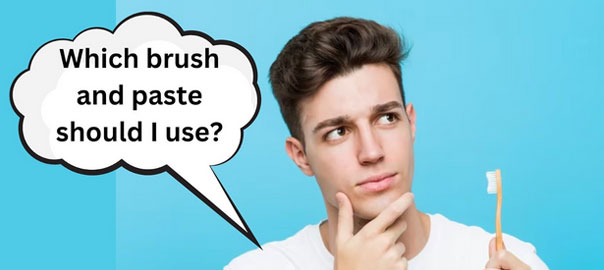
How to Choose the Right Toothbrush and Toothpaste for Your Teeth?
Maintaining good oral hygiene is crucial for overall health, and selecting the right toothbrush and toothpaste is essential. With many options available, it can be challenging to choose the right ones. This article will provide guidance on selecting the appropriate toothbrush and toothpaste.
Toothbrush
Choosing the right toothbrush is crucial to effectively remove plaque, the primary cause of tooth decay and gum disease. Several factors to consider when selecting a toothbrush include:
- Bristle type:Toothbrushes have different bristles, such as soft, medium, and hard. Soft bristles are suitable for most people and are gentle on teeth and gums. Extra-soft bristles are preferable for individuals with sensitive teeth and gums. However, hard bristles can be too harsh and damage teeth and gums over time.
- Manual vs electric: Both manual and electric toothbrushes effectively remove plaque, but electric toothbrushes have advantages. Electric toothbrushes with rotating or oscillating heads provide better cleaning.
Toothpaste
Toothpaste is essential for removing plaque and preventing cavities. Several factors to consider when selecting toothpaste include:
- Fluoride content: Fluoride is a mineral that helps prevent tooth decay. Choose toothpaste that contains fluoride. However, avoid swallowing too much toothpaste, as excess fluoride can be harmful.
- Flavor: Toothpaste has various flavors, such as mint, cinnamon, and fruit. Choose a flavor you like to make brushing more enjoyable and increase the likelihood of brushing for the recommended two minutes.
- Whitening: Toothpaste with whitening agents like baking soda or hydrogen peroxide can whiten teeth. However, this toothpaste may be too harsh for individuals with sensitive teeth.
In addition to selecting the right toothbrush and toothpaste, other tips for maintaining good oral hygiene include:
- Brushing twice daily for two minutes using a gentle circular motion and brushing the tongue to remove bacteria and freshen breath.
- Flossing daily with a piece of floss about 18 inches long, wrapped around fingers, and gently inserted between teeth, moving it up and down following the curve of each tooth.
- Using mouthwash after brushing and flossing to freshen breath and kill bacteria. Choose a mouthwash that contains fluoride.
- Visiting the dentist regularly for checkups and cleanings, as they can detect early signs of tooth decay and gum disease and treat them before they become more serious.
Leave a Reply
Leave a Reply
Explore More Similar Posts
Explore More Blogs


Leave a Reply